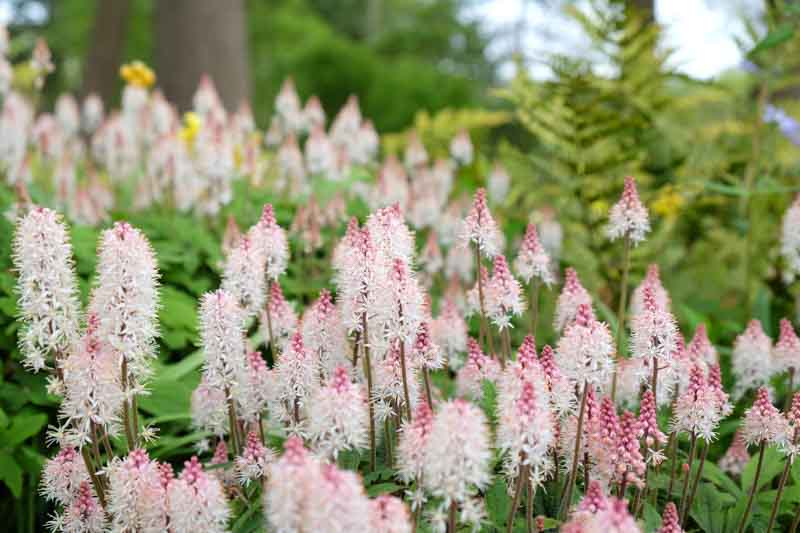Tiarella (Foam Flower)
Tiarella, also known as foam flower (or foamflower), is a perennial plant cherished for its delicate beauty and resilience. It belongs to the family Saxifragaceae and is mostly native to the woodlands of North America. Tiarella has a distinctive clumping habit, forming mounds of attractive, heart-shaped leaves that often feature striking maroon variegation. In spring and early summer, it sends up slender, wiry stems topped with feathery plumes of tiny flowers, creating a soft, foamy appearance.
Hardiness: Tiarella is well-suited to USDA hardiness zones 3 through 9, demonstrating considerable cold tolerance. It thrives in partial to full shade, making it an ideal choice for woodland gardens or shaded borders. The plant prefers moist, well-drained soil rich in organic matter but can adapt to a variety of soil types, showing a robust and adaptable nature.
Flowers: The flowers of Tiarella are its most notable feature. They typically bloom from late spring to early summer, depending on the climate. These blossoms range in color from white to soft pink and are arranged in elongated, feathery clusters that rise above the foliage. The flowers not only add visual appeal but also attract pollinators such as bees and butterflies, enhancing biodiversity in the garden.
Uses: Tiarella has multiple uses in landscaping. Its low-growing, mounding habit makes it excellent for ground cover, particularly in shady areas under trees or on the north side of buildings. It’s also popular in rock gardens, along borders, and in container plantings. The plant’s ability to spread and fill in areas without being invasive makes it a valued addition to any garden.
Benefits: The benefits of incorporating Tiarella into a garden are manifold. It’s particularly valued for its ability to thrive in shade, a trait that makes it useful in challenging garden spots where other plants might fail. Its dense foliage suppresses weeds, reducing maintenance needs. Additionally, Tiarella is a low-maintenance plant, requiring minimal care once established, and is generally resistant to pests and diseases. Its ecological value in supporting pollinators and contributing to the biodiversity of a garden setting further enhances its appeal to environmentally conscious gardeners.

